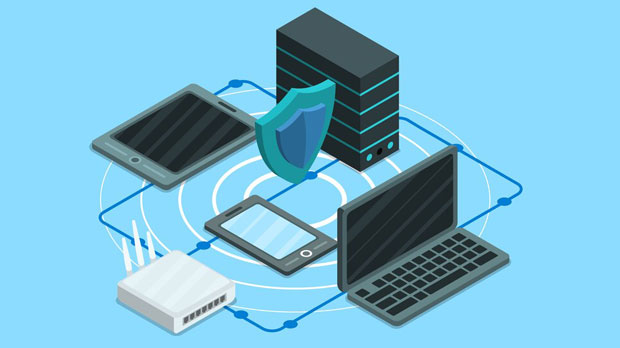In the world of online data scraping, digital marketing, and content management, proxies play an indispensable role in maintaining anonymity, bypassing geographical restrictions, and enhancing performance. Among the many types of proxies available, static ip proxies are often favored for their reliability and long-term usage. Two notable proxies that come under this category are PYPROXY and Situs Proxy. In this article, we will delve into the reliability of these proxies, analyze their features, and provide a comparison to help users understand which is more suitable for their needs. The objective is to provide a comprehensive overview of how both proxies perform under various conditions and which one offers better reliability for sustained use. What Are Static IP Proxies and Why Are They Important?Static IP proxies are a type of proxy server that assigns a fixed IP address to the user. Unlike dynamic IP proxies, where the IP address changes periodically, static IP proxies maintain the same address over an extended period. This feature is crucial for various online activities such as web scraping, bypassing region-based restrictions, and maintaining consistency in digital marketing campaigns.For businesses and individuals relying on consistent data flows or specific IP addresses, static IP proxies offer an advantage by allowing them to maintain long-term connections to websites or servers. This stability is particularly important for activities that require frequent and reliable access, such as SEO tracking, social media management, and content scraping. However, the reliability of the proxy provider plays a significant role in determining how well these tasks can be performed.PyProxy: An OverviewPyProxy is a proxy service that provides static IP addresses to its users. Known for its versatility and user-friendly configuration, PyProxy is often chosen for projects that require high-speed, secure, and stable proxy solutions. It is built with a focus on reliability, making it suitable for tasks like web scraping, data mining, and SEO management. PyProxy offers several benefits, including:1. High-Speed Connectivity: PyProxy offers fast and uninterrupted access to websites, ensuring smooth and efficient data scraping without delays.2. High Anonymity: The use of static IPs ensures that users’ activities are not detected or flagged as suspicious, which is important for maintaining anonymity during online tasks.3. Geo-Targeting: PyProxy provides access to IPs from different geographical locations, allowing businesses to carry out region-specific tasks with ease.Despite these advantages, PyProxy has some challenges. For example, some users report intermittent downtime due to server issues, which can disrupt the consistency required for long-term use. Additionally, while PyProxy offers great anonymity, the network could be vulnerable to detection by websites using sophisticated anti-bot systems.Situs Proxy: An OverviewSitus Proxy, like PyProxy, offers static IP addresses for users seeking reliable and stable proxy solutions. Situs Proxy is particularly known for its robust infrastructure, which guarantees minimal downtime and stable connections. Key features include:1. Robust Security: Situs Proxy prioritizes security by encrypting traffic and protecting users from external threats. This is crucial for high-risk activities like financial transactions or secure data scraping.2. Global Coverage: With a vast array of available locations, Situs Proxy provides flexibility for users who need to access content from different parts of the world.3. Reliable Performance: Situs Proxy prides itself on offering consistent performance with minimal lag or downtime, making it suitable for long-term, high-volume projects.However, Situs Proxy is not without its limitations. Some users have noted that the service could be more customizable to fit specific use cases. Additionally, while Situs Proxy guarantees strong security measures, it may come at a higher price point compared to other proxies offering similar features.Comparison: PyProxy vs Situs Proxy ReliabilityWhen comparing the reliability of PyProxy and Situs Proxy, several factors come into play. These include network stability, uptime, customer support, and scalability.1. Network Stability and UptimeBoth PyProxy and Situs Proxy offer good uptime, but users of PyProxy may experience occasional interruptions, especially during peak usage times. On the other hand, Situs Proxy is widely regarded for its superior network infrastructure, with fewer instances of downtime. This makes Situs Proxy a better option for businesses or individuals who cannot afford interruptions during critical operations.2. Speed and PerformanceIn terms of speed, both proxies offer high-performance connections. However, PyProxy tends to provide faster speeds, especially when accessing servers in local regions. Situs Proxy, while fast, can experience slight lags when accessing distant regions due to its broader global coverage.3. Customer SupportWhen it comes to customer service, PyProxy offers decent support, with resources available via ticketing systems and email. However, some users have mentioned that response times can be slow during high-demand periods. Situs Proxy, in comparison, provides a more comprehensive customer support system, with 24/7 live chat support and dedicated account managers for enterprise clients.4. ScalabilityScalability is an important consideration when choosing a proxy service, especially for businesses looking to scale up their operations. PyProxy is a good choice for small to medium-sized businesses due to its affordable pricing plans and relatively easy setup. Situs Proxy, however, is better suited for large enterprises that need to manage large-scale operations due to its robust infrastructure and custom plans.Final Thoughts: Which Proxy Is More Reliable?Both PyProxy and Situs Proxy have their strengths and weaknesses, making them suitable for different types of users. PyProxy is an excellent choice for those seeking fast, reliable static IP proxies for smaller-scale operations. Its speed and simplicity make it ideal for tasks that require high efficiency. However, its occasional downtime and vulnerability to detection make it less ideal for high-risk or large-scale activities.Situs Proxy, on the other hand, offers superior reliability and robustness, making it a more suitable choice for large businesses or users who require consistent performance and minimal interruptions. Although it comes at a higher price point, its network stability, security features, and customer support make it a more dependable option in the long run.Ultimately, the choice between PyProxy and Situs Proxy depends on your specific needs. If you prioritize speed and affordability, PyProxy might be the right choice. If reliability, security, and scalability are more important, Situs Proxy stands out as the better option.Both proxies provide a solid foundation for businesses or individuals relying on static IP addresses, but choosing the right one requires assessing your specific goals and budget.
Sep 11, 2025



































































